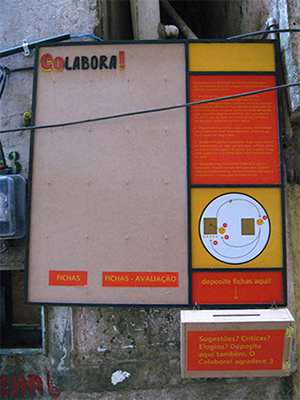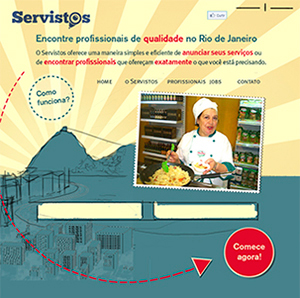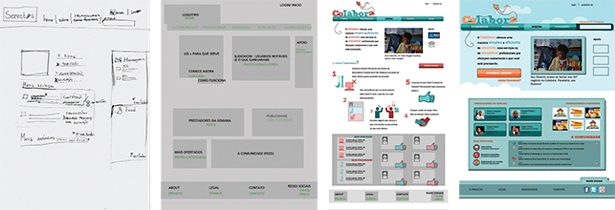
Servistos was initiated as my graduation final project. It started with some desk research for conceptual references, with authors such as Fritjof Capra and John Thackara, which allowed the project scope to be narrowed down into an infrastructural project for unattended communities in the city.


In a second moment, a broad field research was conducted, that entailed getting in touch with relevant stakeholders, such as professional training institutions and community associations across the city. Throughout that stage, interviews were conducted, along with focal groups and participant observation. A clear demand for a system that focused on blue collar jobs started to emerge, considering its strong presence across different sectors of the population.

In possession of a well defined target, the field research started to include some massive testing, with things such a physical MDF prototype that was built in order to emulate the system interface at a convivial space inside the Santa Marta favela. For the creation of those, an extensive benchmarking research was conducted, in order to analyze some interface concepts and structures currently being used for similar purposes. Websites such as TaskRabbit, PeopleperHour and the LETS groups served as major references at this point.
The prototypes then started to gain increased complexity, as well as digital versions that would be constantly taken to smaller focus groups. The aim was to have an interface that was 100% intelligible even to people that had little or no familiarity at all with computers.

After my graduation from the university, the project continued to be developed, with the creation of a business model and a team recruited to help with the work - a second designer, a developer for the back-end and a marketing professional. This lasted for about a year, until it had to be discontinued due to lack of resources. Later on, an article regarding Servistos' research and development was presented and published at the 4th International Forum of Design as a Process, in 2012.

